 Thomas Adès: Orchestral Suites London Philharmonic Orchestra/Thomas Adès (LPO)
Thomas Adès: Orchestral Suites London Philharmonic Orchestra/Thomas Adès (LPO)
Here are three orchestral suites taken from stage works by Thomas Adès, from different stages of his career, captured at live performances at London’s Royal Festival Hall in 2018 and 2023. So not new recordings, but good to have these in one place to trace the composer’s career from prodigious breakthrough to acknowledged master. I have not always been convinced by Adès as a conductor when I’ve seen him live – he seems a bit hyperactive and prone to micromanagement – but judging just aurally by the results here I am inclined to cut him a bit more slack.
I was at the concert in 2023 where the suites from The Tempest and Inferno were first heard in this country, and reviewed it for theartsdesk at the time. As I observed then, I enjoyed Five Spells from The Tempest – billed as The Tempest Symphony at the time – more than the opera it is based on, as it has the singing and libretto removed. The orchestral music on its own has Adès’s trademark colour and depth, and a vivid energy in the overture depicting the storm. Ferdinand and Miranda’s love music has a filmic breadth and “Prospero’s Farewell” is quietly touching. Plus, it sounds very good for a live recording.
I am a big fan of Adès’s Dante Project, which I saw at the Royal Ballet in 2021, and I love Gustavo Dudamel and the LA Philharmonic’s 2023 recording. This suite is taken from the ballet’s first act – The Inferno – and it is by turns dramatic, grotesque, hyperactive and chilly, and eminently danceable. If this one doesn’t quite match up to the LA Phil’s studio version, there is lots to enjoy, such as a lovely cor anglais solo in “The Ferryman”, and the ferociously driven can-can “The Thieves – devoured by snakes”. But the best thing about the album is the chance to hear the Luxury Suite from Powder Her Face. Adès’s hit 1995 opera was scored for just 15 players but the music was bursting at the seams, and fully justifies a re-working for large orchestra. The eight movements run straight through and take us on a trip through the seedy world of 1930s London: you can smell the smoke, and feel the weight of the velvet furnishings. The first six movements are rhythmically restless, sardonic and sarcastic, maybe a bit glib in places, but the last two haunt with their cold despair. It’s all done with such faultless wit and secure technique it’s not surprising the classical world sat up and took notice, and this orchestral expansion is a treat. Bernard Hughes
 Elgar: The Kingdom Francesca Chiejina, Sarah Connolly, Benjamin Hulett, Ashley Riches, Crouch End Festival Chorus, London Mozart Players/David Temple (Signum Classics)
Elgar: The Kingdom Francesca Chiejina, Sarah Connolly, Benjamin Hulett, Ashley Riches, Crouch End Festival Chorus, London Mozart Players/David Temple (Signum Classics)
As David Temple, conductor of the Crouch End Festival Chorus, acknowledges in his liner note, Elgar’s oratorio The Kingdom is very much overshadowed by The Dream of Gerontius, both in terms of performances and recordings, but also critical standing. But Temple considers The Kingdom, premiered in 1906, to be “Elgar’s best choral work” and “a gem from first note to last” and this recording is his attempt to convince the rest of us, by scraping away “the various layers of varnish that have coated the work over the past century.” I am not by any means an aficionado of Elgar’s choral works, so in some ways I can’t adjudicate – but coming to this recording without any preconceptions about the music I can agree that it is a very fine large-scale piece, given a most persuasive and sympathetic recording.
The CEFC are one of the country’s leading symphonic choruses – alongside their work in film, games and pop music. Temple gets them to sing with passion and guts, but never at the expense of a very fine sound and the kind of flawless intonation that is hard to achieve with an ensemble of this size. The chorus is busy, as befits an oratorio on this scale, and the recorded balance with the orchestra nicely judged. The band is an expanded London Mozart Players who accompany with heft but also, particularly in the “Prelude”, with symphonic breadth and subtlety. This movement survives in a recording under Elgar himself, and Temple took this as a starting point for his approach to the whole piece, allowing a generous rubato and responding intuitively to the natural byways of the music, rich in the leitmotivs explored in the rest of the piece.
The last pieces in any oratorio jigsaw are the soloists, and here the recording is also very well served. Dame Sarah Connolly, Benjamin Hulett and Ashley Riches come with impressive reputations, burnished here, but Francesca Chiejina was a new name to me. Her duet with Connolly in the “Pentecost” section is rapturous and perhaps the most exquisite music on the whole disc: I will be looking out for Chiejina from now on. The final section, a setting of the Lord’s Prayer, is becalmed, after the drama of earlier, with Elgar as humble supplicant and the CEFC in touchingly intimate mode for the final lines. For David Temple, evangelist for the piece, it is mission accomplished. Bernard Hughes
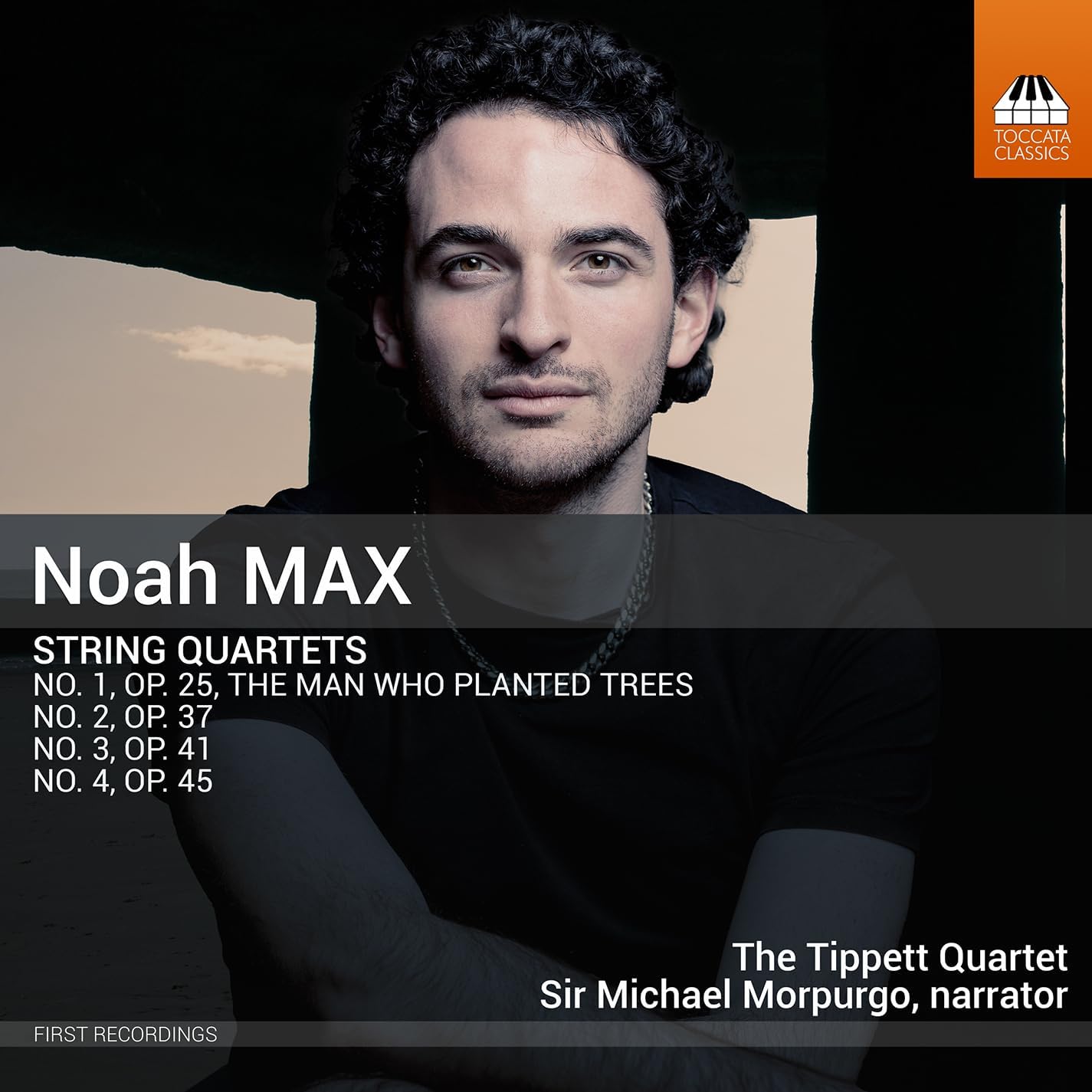 Noah Max: String Quartets 1-4 Tippett Quartet, with Michael Morpurgo (narrator) (Toccata Classics)
Noah Max: String Quartets 1-4 Tippett Quartet, with Michael Morpurgo (narrator) (Toccata Classics)
One of this disc’s attractions is hearing again the voice of novelist Michael Morpurgo on narrating duties. Daniel Pioro’s recent recording of Vivaldi’s Four Seasons had each concerto prefaced with new verses written by Morpurgo. Noah Max’s String Quartet No. 1 has him reading brief extracts from Jean Giono’s fable The Man Who Planted Trees, the story of a lonely shepherd bringing hope back to an isolated valley in the French Alps through an intensive reforesting scheme. Crucially, Morpurgo’s contribution is very much in the background, Max distilling the novella to its very essence. Combining speech and music is a tricky business, but the balance here feels right; Giono’s gradual marvelling at how “men could be as effectual as God in realms other than that of destruction” reflected in the radiant finale. The language is unashamedly tonal, making the quartet’s successor all the more surprising. Quartet No. 2 dates from 2021, taking inspiration from Joan Miró’s painting The Ladder of Escape and sculptures by Moore and Hepworth.
Max’s structural nous makes this angular music relatively straightforward to follow, especially the motoric central scherzo and in the last movement’s progression from near silence to a great slab of string sound; it’s as if the Tippett Quartet have trebled in size. Their confident, incisive playing is superb throughout the disc, notably in Quartet No. 3. This was completed in 2022, a pithy single movement with an emotional punch that belies its 11-minute duration. No. 4 is related to material from Max’s opera The Child in Striped Pyjamas, an adaptation of John Boyne’s children’s novel. Dark, but viscerally exciting, it’s probably my favourite of the set, the central section’s driving energy as exhilarating as it is disturbing. The ending is haunting, first violin John Mills high up and barely audible over the other players’ soft, consonant chords. Exciting, accessible contemporary chamber music, and highly recommended.
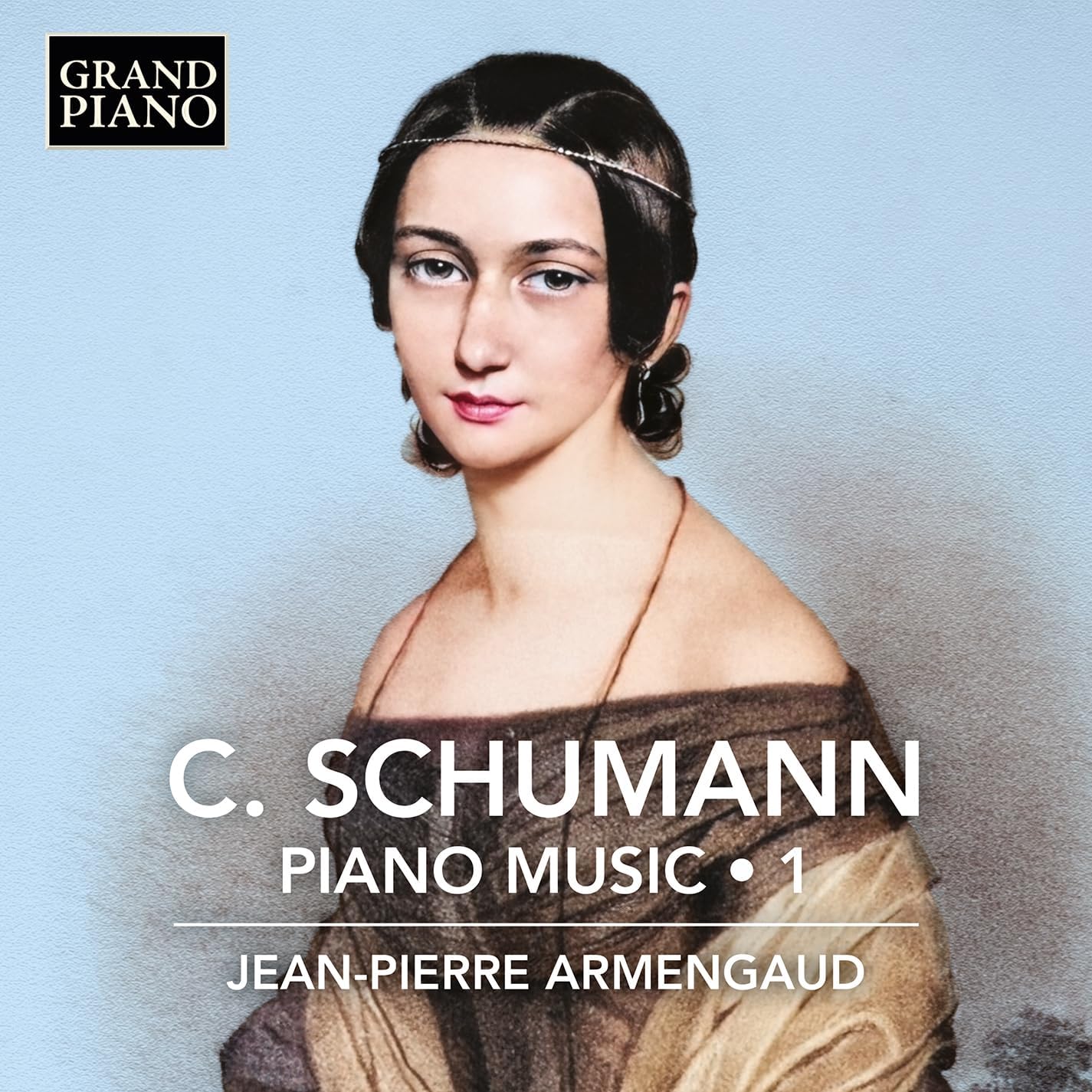 Clara Schumann: Piano Music 1 Jean-Pierre Armengaud (Grand Piano)
Clara Schumann: Piano Music 1 Jean-Pierre Armengaud (Grand Piano)
French pianist Jean-Pierre Armengaud describes his first encounter with Clara Schumann’s piano output as akin to “a journey through the diversity of 19th century music”, one looking back to Bach and Mozart while steeped in early romanticism. Try the Opus 16 Three Preludes and Fugues from 1845, heavily influenced by Clara and her husband Robert’s study of Bach’s keyboard music. No. 2 in B flat straddles two worlds: a warm, pastoral allegretto ceding to an angular fugue subject, the contrapuntal writing effortless. We’re lucky to have this music at all; an oft-quoted diary entry from a 20-year-old Clara has her writing that “a woman shouldn’t attempt to compose. Not one has been able to do so yet, so why should I be an exception?” The works on this disc span less than 20 years, the early Op. 11 Three Romances (1838-39) already evidence of a distinct personality. The Scherzo No. 2 in C minor is a showier but serious-minded display piece, Armengaud giving the music space to breathe. I like his lightness of touch in the restless Op. 21 Romance No. 3, Clara maintaining the tension for five minutes before the closing G minor chord.
We get the Op. 20 Variations on a theme by Robert Schumann (1853), Clara extracting plenty of mileage from a little theme taken from her husband’s Bunte Blätter. Two late Romances are darker in tone, the melancholy B minor work published posthumously, its bare final notes sounding here like a door gently closing. These are persuasive performances, warmly recorded in Armengaud’s home studio in Paris, and this disc serves as an excellent introduction to an underrated talent.
 Harald Walkate: Room for Other People The New York Second (New York Second)
Harald Walkate: Room for Other People The New York Second (New York Second)
This album’s subtitle, "Ten compositions inspired by Vivien Maier photographs" will mean more if you’ve watched the 2013 documentary Finding Vivian Maier. Maier (1926-2009) was a Chicago-based nanny who liked to spend her free days exploring the city’s streets with her twin-lens Rolleiflex. Maier’s street photography side hustle was largely unknown until prints and negatives started to appear after her death; it’s estimated that around 150,000 images survive. Dutch pianist and composer Harald Walkate’s new album with his eight-piece group The New York Second is based on a selection of Maier photographs, and it’s a delight. Walkate’s sleeve note addresses head-on the question as to whether Maier wanted her work to be seen: “some would argue that she would not have wanted her work to be made public – they may well be right but they’re out there now and they can’t be taken back.” One reason for buying the CD rather than streaming the album is that the source photographs are included in the booklet. “983 Third Avenue” is a terrific opener, a richly scored New York cityscape. “Florida 1957”, suggested by an image of a young African American on a Florida street at the time of the first Civil Rights Act, is laid-back and optimistic in tone. “The Collectors Corner” and “The Class Photograph” were prompted by photos of children and students, the latter’s image an arresting snap of a school playground, presumably taken without permission.
The album’s title track is named after a Maier quote, her take on life being that “nothing lasts forever. We have to make room for other people It’s a wheel, you get on, you go to the end…”. Walkate’s cool, slightly aloof music fits his subject’s quizzical self-portrait perfectly, Rob Waring’s vibraphone nicely clear in the mix. Walkate’s responses to each image are invariably right-sounding, whether it’s a shot of New York’s ornate (and now demolished) Penn Station or a glimpse of four lonely Chicago commuters in heavy snow. Permission to reproduce a Maier photograph taken from Notre-Dame de Paris wasn’t granted, so Walkate’s own “View of Île Saint-Louis” is included instead. No matter: importantly, the musical response is spot on. A lovely disc, and one of my favourite releases so far this year. Can we have a gatefold vinyl reissue please?
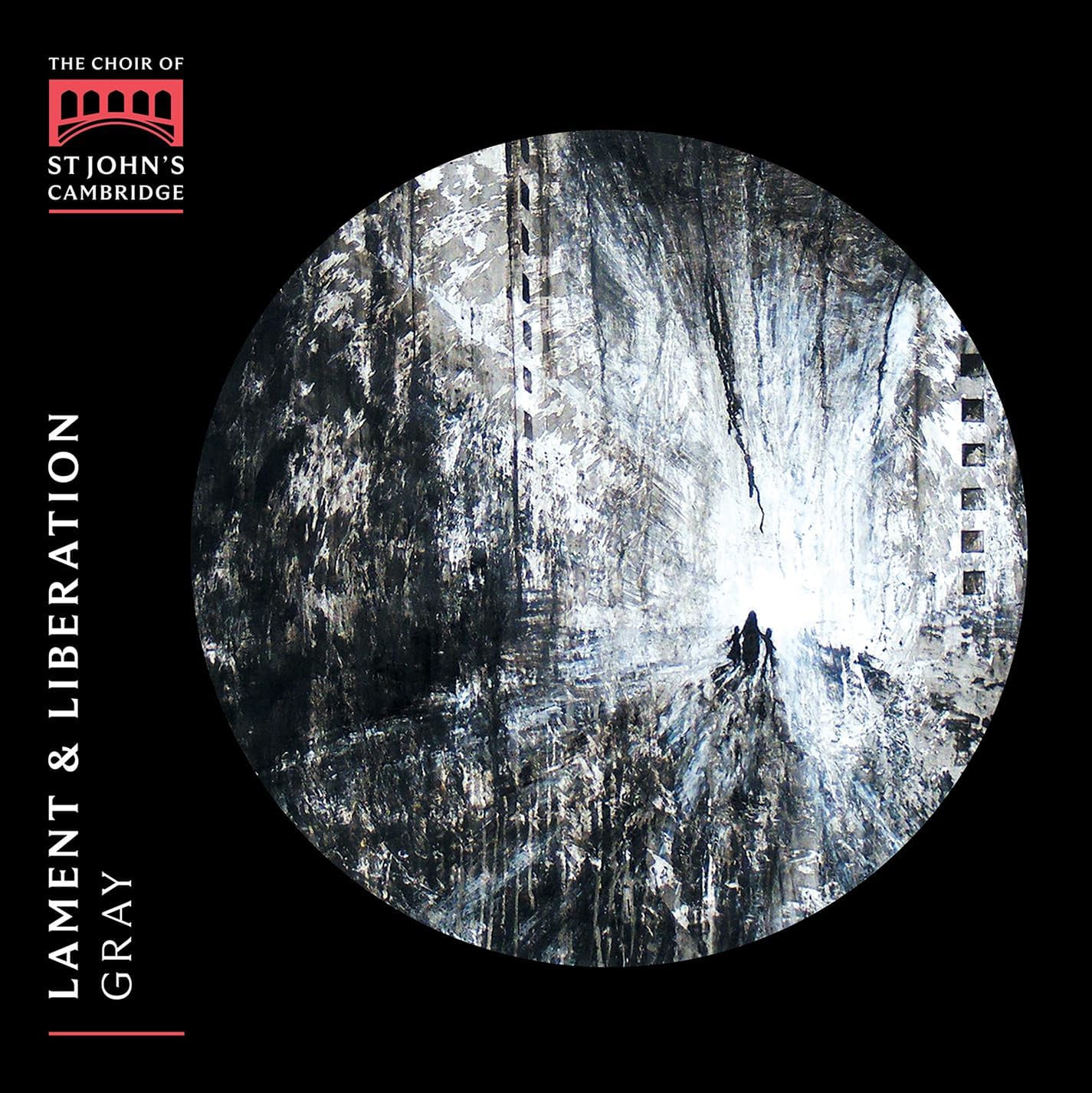 Lament & Liberation Choir of St John’s College, Cambridge/Christopher Gray, with Alexander Robson (organ) (Signum)
Lament & Liberation Choir of St John’s College, Cambridge/Christopher Gray, with Alexander Robson (organ) (Signum)
Belfast-born Christopher Gray’s first disc as Director of Music of the Choir of St John’s College, Cambridge is a bold statement of intent. Lament & Liberation contains a mixture of modern classics and new commissions, the earliest work here being James MacMillan’s Cantos Sagrados, composed in 1989. Two of its three movements set words by Ariel Dorfman, the overlapping dialogues of “Identity” set to angry and declamatory music, a political prisoner’s body found floating in the river the cue for some viscerally exciting but anguished choral writing. Massed voices cry out “I can bury my own dead” before the soft, hymn-like close. The central “Virgin of Guadalupe” offers little relief, poet Ana Maria Mendoza’s text an anguished prayer by the indigenous people of Tapeyepac, Mexico, “flogged and burned… despised, deceived and mocked…”. This isn’t a work to be enjoyed in a conventional sense but Gray’s St John’s College choir sing it with a confidence and bite that’s compelling. Roxanna Panufnik’s “Deus, Deus meus” is an extract from her 1997 Westminster Mass, more obviously lyrical but harmonically complex and equally difficult to perform; it’s a pity that the solo treble isn’t given a shout-out in the booklet.
Echoes in Time by Joanna Marsh was commissioned by Grey in 2023, an introspective and moving triptych based on poetry by Malcolm Guite. Connections between the biblical Flight to Egypt and the plight of contemporary refugees, or the burning of the Palm Sunday cross and recent forest fires are deftly hinted at, some consolation coming in the third part’s closing lines, “Hope could rise from ashes even now/Beginning with this sign upon your brow”. Helena Paish’s The Annunciation was premiered in 2024, using a poem by Edwin Muir. Listen to how Paish sets Muir’s first line (“The angel and the girl are met”), a brilliant synthesis of simplicity and sophistication. Martin Baker’s Ecce ego Ioannes is a virtuosic organ prelude suggested by lines in the Book of Revelation. It’s brilliantly played here by Alexander Robson (plus an uncredited third hand), but how much you’ll enjoy it will depend on your appetite for such thunderous, apocalyptic music. Gray admits in his booklet introduction that “this is not an album for the faint-hearted” but sweetens the pill with the beautiful closing number, Dobrinka Tabakova’s lyrical 2022 psalm setting Turn our captivity, O Lord.



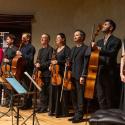
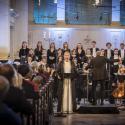


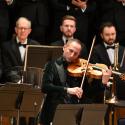
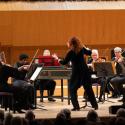






Add comment